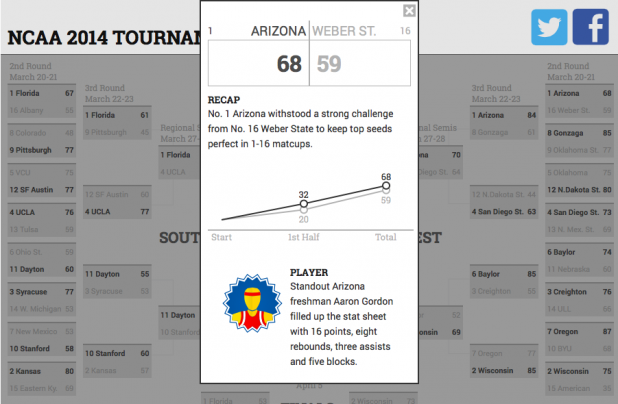Content Marketing
5 Creative Ways to Recycle Your Visual Content
This article first appeared on Visually.
Editors, marketers, and content strategists put so much time and effort in creating visual content, yet when it comes to using it, it’s often a one-and-done affair. They publish it, then let it languish.
Let’s take a look at some smart ways to repurpose images, posters, video or other visuals you already have and make them shine the second (and third, or even fourth) time around.
1. Use static visuals to create animated videos
Hootsuite created an infographic last year comparing social media networks to the competing houses (or families) from the popular HBO series Game of Thrones. In a clever twist ahead of this year’s season premiere, the Hootsuite team used the old visual as a springboard to assemble a new video riffing off the show’s opening theme song and graphics.
2. Liven up your next email campaign
Don’t assume that everyone on your mailing list visits your blog or follows you on Twitter: feel free to cross-pollinate! Let your visuals do double duty by featuring one or two in your next email blast, so they’re seen by as many people as possible.
With Google recently introducing a visual way to preview emails in the Promotions tab—the feature is still in beta—the advice below is more relevant than ever before.
- Don’t overdo it. How many images you choose to insert in your email will depend on your product or service. Retailers or restaurants can get away with image-laden email more than a business consultant whose services don’t rely on visual appeal.
- Watch your analytics. Check the bounce and click-through rates of emails that include visuals to see what impact they have on your overall campaign strategy. Be ready to change tactics if your customers don’t respond well.
- Make sure your visuals are mobile-friendly. Keep the overall layout of your emails simple. A single-column setup is better than two or more columns, for example, which may force mobile readers to scroll sideways.
- Plan for the invisible. Some email clients turn images off and the reader needs to take deliberate action to display them. Never assume that they will. Position the image in a place where it won’t look awkward if displayed as a blank white box and add a good HTML description so the recipient can read what the image is about
3. Use web and print content interchangeably
Producing visuals can be costly, so it’s always a good idea to try to repurpose existing content before absorbing the expense of creating something new. And who says web content can’t be used in print—and vice versa?
- Place static versions of your visual media where you’d normally run print ads. Short infographics make a nice change of pace from traditional ad copy.
- Make your press releases pop by including eye-catching infographics, charts, or diagrams to illustrate your message.
- Upload copies of your print ads to social media channels to encourage traffic to your website.
- Turn existing videos into animated GIFs using a free web-based service like Picasion.
4. Update existing visuals with current data
Sometimes, there’s no need to reinvent the wheel when simply inflating a tire will do. Rather than creating brand new visual content, you can either update an older visual with recent data, or use data you already have to whip up a new visual. For instance, a batch of slides depicting charts of holiday buying trends over the last few years can become a slick new video or interactive visualization.
The Huffington Post really ran with this idea during the recent NCAA Final Four tournament by creating an interactive, continually updated infographic for the event.
5. Build a blog post around an existing visual
One of the most obvious ways to recycle visual content is also the most often overlooked. Creating a blog post around an infographic, poster, or a video allows you to share a story with more depth than a single static image can offer.
Some things to keep in mind:
- Don’t simply repeat the data that’s already in the visual. Instead, expand or elaborate on why it’s important.
- Tell the story behind your visual. Publish a few initial sketches of the design or have the team who worked on it talk about interesting challenges encountered in the production process and how they were resolved. This can turn your visual into an evergreen learning tool that others can come back to long after it’s been published.
- Be sure to include social networking share buttons and a call to action. One study conducted in 2011 showed that total views increased by 94 percent if a published article contained a relevant photo or infographic.
Keep these tips in mind the next time you’re creating visual content. Think about ways you can reuse what you’re making some time down the line and give it a new lease on life with minimal fuss.
Featured image from Shutterstock
Lisa Hoover McGreevy is a seasoned professional writer specializing in corporate messaging, a data journalist on the Visually Marketplace, and a regular contributor to the Visually blog.
Image by Javier VázquezGet better at your job right now.
Read our monthly newsletter to master content marketing. It’s made for marketers, creators, and everyone in between.







